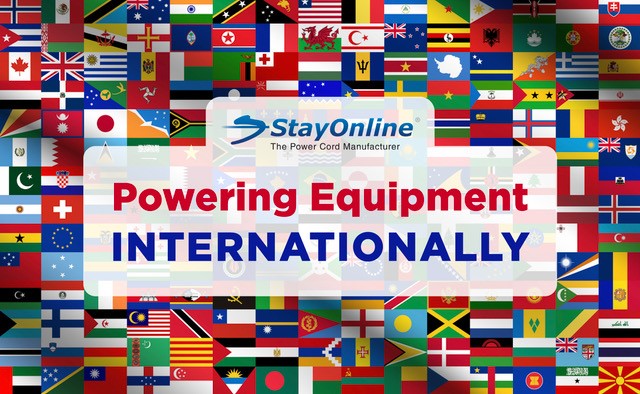
There are several challenges typically associated with electrical devices when traveling abroad, selling in a foreign market or installing equipment in a non-US data center. These issues usually have to do with voltage, receptacle types, hertz, current stability, approvals and even power cords.
Here, we'll address these one-by-one and outline solutions that will help smooth the road to safe and efficient electrical connections in international markets.
Voltage
While most of the world employs 220-240 volts (V), the standard in North America is 110-125V. Damage will result if equipment is incompatible with the voltage supplied by the power source. With the increased level of globalization, fortunately, most electronics now ship with universal power supplies that accommodate all voltages.
Still, it is essential to check the equipment's documentation or the input/output label on the device and verify the power supply range. If 100-240v is listed, then it probably offers universal voltage. Bear in mind that not all universal power supplies are auto-sensing, however. Some power supplies for computers need to be manually switched via a red sliding switch on the exterior surface that typically shows 115v or 230v. This must be moved to the proper position, or the power supply will be damaged.
Receptacle Types
This one can be particularly frustrating, and it is a factor of local politics in some regions of the world. In fact, one may find several different receptacle types used within a given country. There are 14 main receptacle (outlet) types used throughout the world; these typically have different dimensions, pin diameters, amperage ratings, and insulation requirements. Fortunately, there are numerous reference materials and charts available to help determine which configurations are used in which countries, and how to introduce equipment into a receptacle with the appropriate voltage.
Hertz
This function generally pertains to motorized devices rather than electronics. Many power supplies have universal Hertz ratings of 50/60Hz. Bear in mind that transformers cannot convert Hertz. There are also ample reference materials available to help determine which configurations are used in various countries.
Current Stability
While this can be an issue even in parts of North America (hence, the widespread use of surge protectors), power grids abroad are often far less reliable. It is advisable to employ surge protection whenever using electrical equipment abroad. A UPS or voltage regulator is even better in the case of permanently installed devices.
Approvals
A given country's governing bodies for electrical standards will typically have established approvals; these may appear on electrical equipment. In general, these are only necessary for companies exporting large amounts of equipment into that country for resale.
In most cases, devices used by business travelers, Information Technology equipment for collocation and equipment sent internationally for use within a company are not subject to specific approval. One approval that is crucial is the Restriction of Hazardous Substances (RoHS); this limits the materials that can be used in the production of a product. All products exported to the European Union (EU) must comply with RoHS.
Power Cords
The two fundamental differences in power cords between the US and non-US is that the metric system is used in most places internationally, and that international cord jackets are different from the jackets used in the US (e.g., SJT, SVT, STO, SOOW).
Here, there are also numerous reference materials available which reference power cord-related issues, such as cord jackets, Harmonized amperage ratings versus North American gauge (AWG) amperage ratings and internal wiring color codes.
While voltage is typically the most critical aspect of switching between international power and North American power, in general, most of the other differences are only significant to manufacturers who are exporting products internationally. In such cases, the chief concern will be ensuring that they comply with the requisite national approvals.
Conclusion
Looking for the right power cord for an international application? For more information about voltages in different countries, check out StayOnline's International Power Guide, or visit our International IEC Reference Chart for all configurations and associated components. You can also reach us by phone at 888/346-4688 or by email at sales@stayonline.com.


